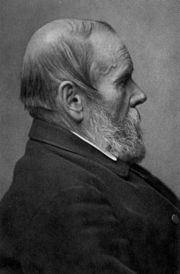Friedrich Vischer's Human Design Chart
4/6 Emotional GeneratorGerman novelist, poet, playwright, and writer on the philosophy of art, known for his efforts to create a theoretical basis for literary realism.
Vischer’s theories of aesthetics, based on ideas of G.W.F. Hegel, began to develop while he was teaching at the University of Tübingen, where he had studied. He became a professor at Tübingen in 1844 but was suspended for two years because of an outspokenly liberal inaugural address. His work was finally published in six volumes as Ästhetik, oder Wissenschaft des Schönen (1846–1857; “Aesthetics, or Fine Arts”). In 1855 he became professor at Zürich, but he returned to Tübingen in 1866.
Vischer’s other works include Kritische Gänge, 2 vol. (1844; “Critical Path”), a collection of essays, and Altes und Neues (1881; “Old and New”). Today, he is mainly remembered as the author of the novel Auch einer, in which he developed the concept of Die Tücke des Objekts (the spite of objects), a comical theory according to which seemingly inanimate object conspire against humans.
He died on 14 September 1887 at age 80 in Gmunden, Austria.
Link to Wikipedia biography
Discover More Famous People
Browse and analyze over 55,000 public figures and celebrities.
Ra Uru Hu
5/1 Manifestor
Martha Stewart
4/6 Manifestor
David Lynch
4/6 Generator
Barack Obama
6/2 Projector
Steve Jobs
6/3 Generator
Vladimir Putin
5/1 Manifestor
Kim Kardashian
3/5 Generator
Michael Jackson
1/3 Projector
Marilyn Monroe
6/2 Projector
Ariana Grande
2/4 Projector
Oprah Winfrey
2/4 Generator
Johnny Depp
2/4 ManifestorWhat is HumanDesign.ai and how does it work?
Curious what makes Friedrich Vischer tick? HumanDesign.ai instantly maps their exact birth data into a fully interactive clickable bodygraph chart, letting you hover or tap every center, channel, and gate for plain-language explanations. Bella, the platform’s built-in AI guide, adds context in real time, translating complex mechanics into everyday insights so you can see how Friedrich Vischer’s strengths, challenges, and life themes play out on-screen.
The same tools are waiting for you. Generate your own Human Design Chart in seconds, open a library of 2000+ suggested questions, and chat with Bella as often as you like to decode your design, daily transits, and even relationship dynamics.
Want to compare energies? Save unlimited charts for friends, family, or clients, then ask Bella to reveal compatibilities, composite patterns, or coaching tips, all in one conversation thread.
Start free with core features, or unlock our Personal and Pro plans for deeper dives: unlimited Q&A, celebrity chart search spanning 55,000+ public figures, white-label PDF reports, branded content generation, and a professional profile with built-in booking for practitioners. Whether you’re exploring your own potential or guiding others, HumanDesign.ai delivers an ever-expanding toolbox of AI-powered insights—no spreadsheets, no jargon, just clarity at your fingertips.
Ready to see yours? Signup for FREE today!

